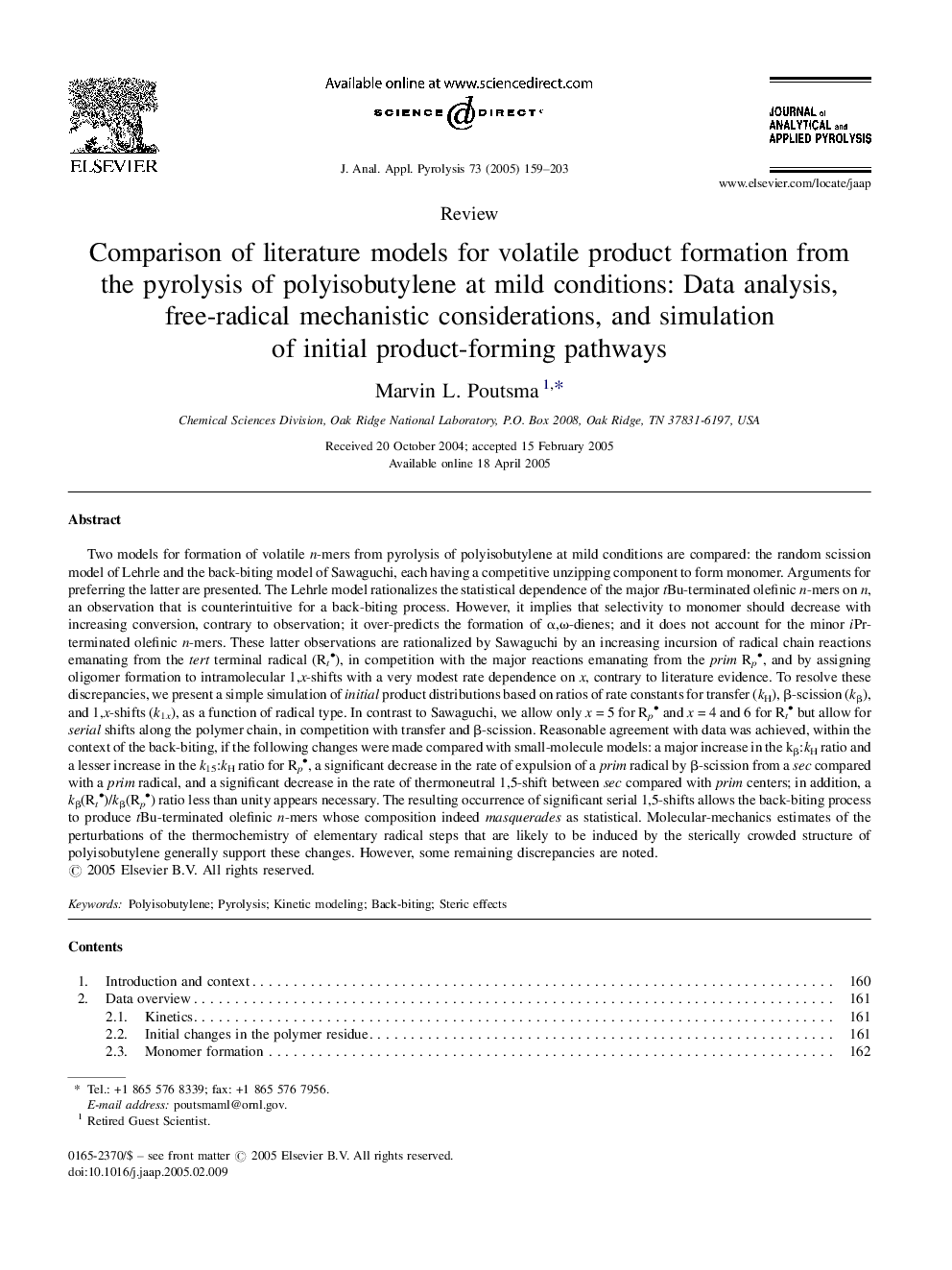| Article ID | Journal | Published Year | Pages | File Type |
|---|---|---|---|---|
| 10547545 | Journal of Analytical and Applied Pyrolysis | 2005 | 45 Pages |
Abstract
Two models for formation of volatile n-mers from pyrolysis of polyisobutylene at mild conditions are compared: the random scission model of Lehrle and the back-biting model of Sawaguchi, each having a competitive unzipping component to form monomer. Arguments for preferring the latter are presented. The Lehrle model rationalizes the statistical dependence of the major tBu-terminated olefinic n-mers on n, an observation that is counterintuitive for a back-biting process. However, it implies that selectivity to monomer should decrease with increasing conversion, contrary to observation; it over-predicts the formation of α,Ï-dienes; and it does not account for the minor iPr-terminated olefinic n-mers. These latter observations are rationalized by Sawaguchi by an increasing incursion of radical chain reactions emanating from the tert terminal radical (Rt), in competition with the major reactions emanating from the prim Rp, and by assigning oligomer formation to intramolecular 1,x-shifts with a very modest rate dependence on x, contrary to literature evidence. To resolve these discrepancies, we present a simple simulation of initial product distributions based on ratios of rate constants for transfer (kH), β-scission (kβ), and 1,x-shifts (k1x), as a function of radical type. In contrast to Sawaguchi, we allow only x = 5 for Rp and x = 4 and 6 for Rt but allow for serial shifts along the polymer chain, in competition with transfer and β-scission. Reasonable agreement with data was achieved, within the context of the back-biting, if the following changes were made compared with small-molecule models: a major increase in the kβ:kH ratio and a lesser increase in the k15:kH ratio for Rp, a significant decrease in the rate of expulsion of a prim radical by β-scission from a sec compared with a prim radical, and a significant decrease in the rate of thermoneutral 1,5-shift between sec compared with prim centers; in addition, a kβ(Rt)/kβ(Rp) ratio less than unity appears necessary. The resulting occurrence of significant serial 1,5-shifts allows the back-biting process to produce tBu-terminated olefinic n-mers whose composition indeed masquerades as statistical. Molecular-mechanics estimates of the perturbations of the thermochemistry of elementary radical steps that are likely to be induced by the sterically crowded structure of polyisobutylene generally support these changes. However, some remaining discrepancies are noted.
Related Topics
Physical Sciences and Engineering
Chemistry
Analytical Chemistry
Authors
Marvin L. Poutsma,
